mobile View, to the German Version tap the flag
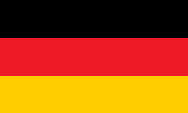

- parlamentary monarchy with the British monarch as Head of State
- former name, to 1973: British Honduras
- zone of US-american influence
• Flag
• Historical Flags
• Meaning/Origin of the Flag
• Coat of Arms
• Historical Coats of Arms
• Meaning/Origin of the Coat of Arms
• Aircraft marking
• Map
• Numbers and Facts
• History
• Origin of the Country's Name
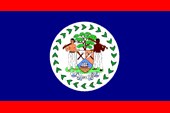
National flag,
ratio – ratio = 2:3,
Source, by: Corel Draw 4,
Flaggen und Wappen






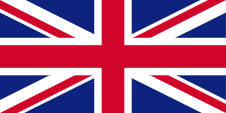
1787–1870
Flagge von Großbritannien,
ratio = 1:2,
Source, by: World Statesmen





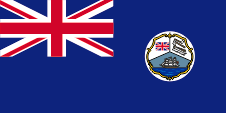
1870–1919,
Flag of the government (state flag),
ratio = 1:2,
Source, by: World Statesmen



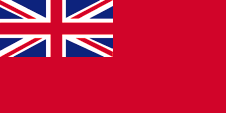
1870–1981,
Merchant flag,
ratio = 1:2,
Source, by: Wappen und Flaggen aller Nationen





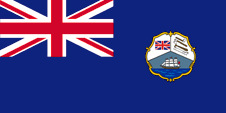
1919–1981,
Flag of the government (state flag),
ratio = 1:2,
Source, by: World Statesmen



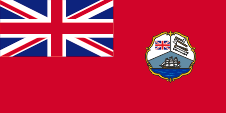
ca. 1960(?)–1981,
Unofficial merchant flag,
ratio = 1:2,
Source, by: Flags of the World



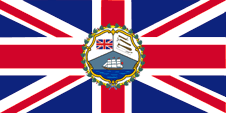
1950–1981,
Flag of the Governor,
ratio = 1:2,
Source, by: Flags of the World



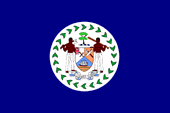
02.02.1950–1967,
Unofficial national flag,
ratio = 2:3,
Source, by: Flags of the World



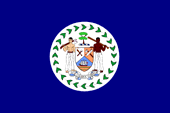
1967–21.09.1981,
Unofficial national flag,
ratio = 2:3,
Source, by: Flags of the World



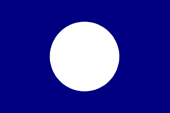
1950–1981,
Unofficial national flag without coat of arms,
ratio = 2:3,
Source, by: Flags of the World




In British Honduras, only the flag of the United Kingdom was initially used, what changed in the middle of the 19th century, because, the United Kingdom introduced a flag system in 1864 in which:
• war ships fly the "White Ensign" (naval flag), a white flag often with an uninterrupted red St. George's-Cross and with the Union Jack in the upper staff quadrant of the flag,
• merchant ships fly a "Red Ensign" (also named "Civil Ensign" => civil flag, the real merchant flag), a red flag with the Union Jack in the upper staff quadrant of the flag, and
• governmental ships fly the "Blue Ensign" (flag for the use by the gouvernment => the actual state flag), a blue flag with the Union Jack in the upper staff quadrant of the flag.
Since 1865 ships of colonial governments were permitted to fly the Blue Ensign with a badge in the flying end of the flag. The respective governments were asked to design appropriate badges. Merchant ships and seafaring persons from colonies were only permitted to use the Red Ensign with a badge, then also named Civil Ensign, if permission has been given to the respective colony by the British admiralty. Such a permission was never given to British Honduras. Nevertheless, in the middle of the 20th century, private individuals startet to use illicitly red merchant flags with the badge, instead of the plain red merchant flag (so-called Red Ensign). Alreday in 1950 the country had switched to using its own national flag without permission. It was a single-coloured blue flag with a white disk in the centre. Within this disk the coat of arms was positioned. It was awarded by King Edward VII in 1907. It was later surrounded by a wreath of fifty leaves, a hint to the year 1950 when the movement for independence and sovereignty arose. When the coat of arms was changed a little bit in 1967, this flag also changed. For quick use and private purposes there was also a variant without a coat of arms in the white disc. The United Kingdom probably tolerated this doing, because British Honduras was always close to independence, was granted internal self-government (autonomy) in 1964, was renamed Belize in 1973, but there were uncertainties because Guatemala claimed the country. On the occasion of the declaration of independence on the 21st of September, 1981 it was changed somewhat to its present day’s form. A red border was added to the top and bottom of the flag. It stands for the United Democratic Party, the opposition party of that time. The change was made, because the unchanged flag would resemble the flag of the United People's Party too much, which led the land into independence.
Source:
Flags of the World,
Die Welt der Flaggen,
Flaggen und Wappen der Welt, Translator of the English text (partial): Joachim Nuthack

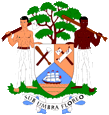
since 1981, Coat of arms of Belize,
Source:
Corel Draw 4,
Flags of the World,
Flaggen und Wappen der Welt

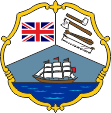
1870–1981,
Badge of British Honduras,
Source:
World Statesmen
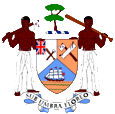
1907–1967,
Coat of arms of British Honduras,
Source:
Corel Draw 4,
Flags of the World,
Flaggen und Wappen der Welt
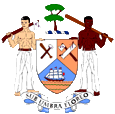
1967–1981,
Coat of arms of British Honduras,
Source:
Corel Draw 4,
Flags of the World,
Flaggen und Wappen der Welt

The coat of arms of British Honduras goes back to the year 1819, but did not become official until it was awarded by King Edward VII on the 28th of January, 1907. It shows by way of different tools the significance of forestry. The shield is divided into three parts. Inside the first one, the top left silvery one, an axe crossed with a paddle, in the canton of the field until 1967 the British Union Jack. Inside the second one, the top right golden one, an axe and a tree saw. Inside the third one, the lower blue one, a vessel. Above the shield a mahogany tree. The shield was initially held by two Blacks in white trousers. In 1967 the left shield holder became a Creole. Both shield holders symbolize the many different ethnic population groups. Below the shield a motto-banner with the Latin inscription: "SUB UMBRA FLOREO" => "I bloom in the shadow".
Source:
Flags of the World,
Die Welt der Flaggen,
Flaggen und Wappen der Welt


Insignia (Aircraft marking),
Source, by: Wikipedia (EN)

Location:
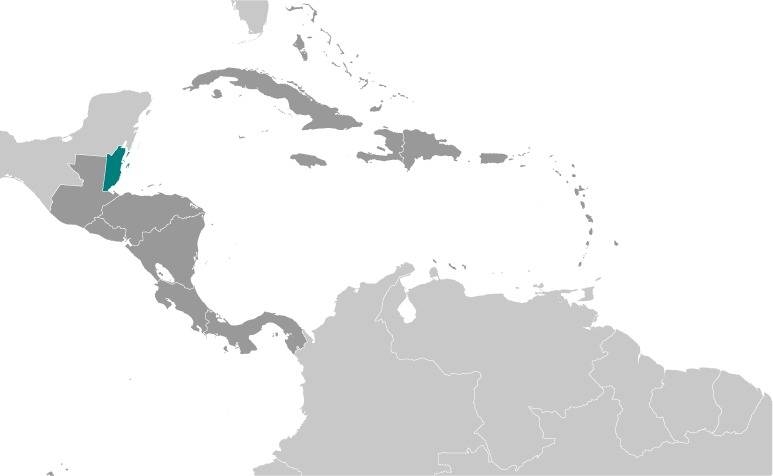
Source: CIA World Factbook
Map of the country:
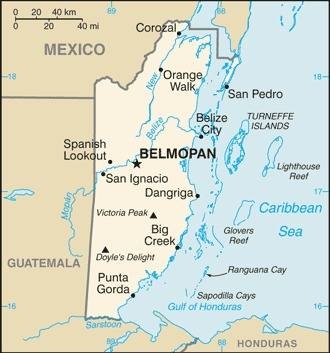
Source: CIA World Factbook

Area: 8.867 square miles
Inhabitants: 408.500 (2019), thereof 53% Mestizos, 26% Mulattos, 11% native Indians (Maya), 6% of African descent (Garifuna), 4% Germans, 4% Arabs, Chinese, Indians, other Europeans
Religions: 50% Roman Catholic, 27% Protestant, 14% other religions, 9% Non-Religious
Density of Population: 46 inh./sq.mi.
Capital: Belmopan, 13.900 inh. (2010)
official Language: English
other Languages: Spanish, Creole, Garifuna, Maya Languages, German
Currency: 1 Belize-Dollar (BZD, BZ$) = 100 Cents
Time Zone: GMT – 6 h
Source: Wikipedia (D)

4th–10th century · part of the Maya Empire
1524 · Hernan Cortez exploits the region for Spain
1665 · beginning English Colonization
1670 · Treaty of Madrid, Spain allows even English traders into the area
1732 · British settlement begins at Black River
1742 · the Britisch colony becomes subordinated to Jamaica
1763 · Treaty of Paris, Spain allows British settlers to stay in the area
1779–1782 · Spain occupies St. George's Caye
1783 · Treaty of Versailles, Spain recognizes British rights between Hondo River and Sibun River
1787 · Spain occupies the Black River settlement, the British settlers retreat into the interior of Belize
1798 · failed attempt of Spain to occupy the St. George's Caye again
1853 · the colony calls itself "British Honduras"
1859 · boundary treaty with Guatemala
12th of May in 1862 · official establish of the British-Honduras colony
1871 · Britisch Honduras becomes a crown colony
1884 · the subordination under the administration of Jamaica ends
1st of January in 1964 · the United Kingdom grants internal autonomy
1973 · renaming to Belize
21st of September 1981 · independence
1992 · Guatemala recognizes the independence of Belize to formally
1994 · withdrawal of the last British squads
Source:
Wikipedia (D),
World Statesmen,
Länder der Erde

The name "Belize" goes back to the city of Belize, which was between the years 1789 and 1970, the capital of the country. In the 19th Century, the city or even the country was called "Balize", and the origin of the word is clear. The French word "balise" means "beacon", which implies that in earlier times, there has already been a lighthouse to mark the passage through the off-shore reefs. Since 1732 the region was settled by British colonists, and in 1853 the colony was renamed in "British Honduras. In the year 1973 follows the rename back in "Belize", at least eight years before the independence. Another theory about the origin of the country's name is linked to the decline of piracy when the Scottish adventurer Wallis (which is written "Baliz" in Spanish) managed to set up a trade on the coast in precious timber, felled in the area could be. Since the Spaniards still controlled the area at that time, the Spanish name of Wallis could have been transferred to this coastal region.
Source: Volker Preuss,
Brockhaus Konversationslexikon via
RetroBib Retrobibliothek


![]()









































